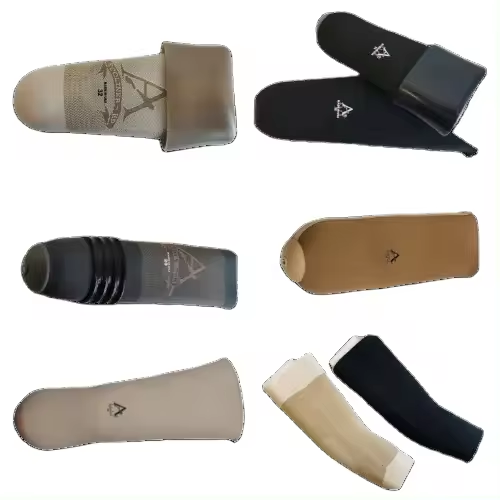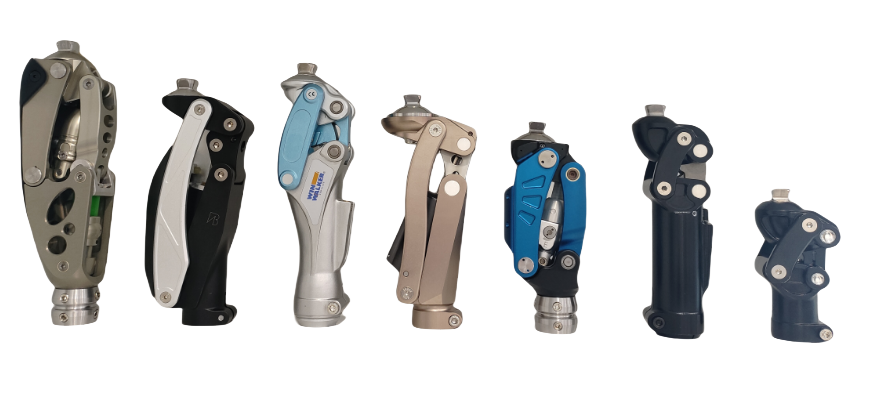The Ultimate Guide to Prosthetic Orthopedic Legs
Release Time:
Mar 06,2024
Prosthetic orthopedic legs are advanced medical devices designed to help individuals regain mobility and independence after limb amputation. These artificial limbs come in various types, each tailored to meet the specific needs and preferences of the user. One common type of prosthetic orthopedic leg is the below-knee prosthetic, which is designed for individuals who have undergone amputation bel
Prosthetic orthopedic legs are advanced medical devices designed to help individuals regain mobility and independence after limb amputation. These artificial limbs come in various types, each tailored to meet the specific needs and preferences of the user.
One common type of prosthetic orthopedic leg is the below-knee prosthetic, which is designed for individuals who have undergone amputation below the knee. This type of prosthetic typically consists of a socket, a pylon, and a foot, all carefully crafted to provide comfort, stability, and natural movement.
Another type is the above-knee prosthetic, which is designed for individuals with amputations above the knee. This type of prosthetic requires a more complex design to support the user's weight and facilitate smooth walking motion.
When it comes to fitting prosthetic orthopedic legs, it is crucial to work with experienced prosthetists who can assess your unique needs and ensure a proper fit. Proper fitting is essential for comfort, functionality, and overall well-being.
Maintaining prosthetic orthopedic legs is also important to ensure longevity and optimal performance. Regular cleaning, inspection, and adjustments are recommended to prevent issues and ensure that the prosthetic functions as intended.
In conclusion, prosthetic orthopedic legs are life-changing devices that can significantly improve the quality of life for amputees. By understanding the different types, fitting process, and maintenance requirements, individuals can make informed decisions to find the right prosthetic for their needs.
Keywords:
You Can Also Learn More About Industry Trends
Dec 14,2025
The Future of Medical Prosthetic Implants: Innovations and Insights
Medical prosthetic implants have revolutionized the field of healthcare, providing solutions that enhance the quality of life for individuals with disabilities or injuries. These implants can replace or support damaged body parts, allowing patients to regain functionality and mobility. As technology advances, the development of medical prosthetic implants is becoming increasingly sophisticated, in
Dec 07,2025
The Comprehensive Impact of Medical Prosthetic Implants in Modern Healthcare
The Comprehensive Impact of Medical Prosthetic Implants in Modern Healthcare Table of Contents 1. Introduction to Medical Prosthetic Implants 2. Types of Medical Prosthetic Implants 3. Benefits of Medical Prosthetic Implants 4. Technological Advancements in Prosthetic Implants 5. Challenges in the Adoption of Prosthetic Technology 6. Impact on Patient Quality of Life 7
Nov 30,2025
Understanding Medical Prosthetic Implants: Innovations and Benefits
Medical prosthetic implants have become a cornerstone of modern medicine, offering solutions for individuals who have lost limbs, suffered from joint problems, or require surgical replacements due to various medical conditions. The field has seen remarkable advancements over the years, leading to improved quality of life for countless patients. At the heart of medical prosthetic implants is the go
Nov 23,2025
Exploring Innovative Materials Used in Medical Prosthetic Implants: A Comprehensive Guide
Exploring Innovative Materials Used in Medical Prosthetic Implants Table of Contents 1. Introduction to Medical Prosthetic Implants 2. Importance of Material Selection in Prosthetics 3. Traditional Materials in Prosthetic Implants 4. Innovative Materials Transforming Prosthetic Design 4.1 Titanium: The Gold Standard 4.2 Ceramics: A Biocompatible Op

Building 58, Tianshan Community, Yuanshi County, Shijiazhuang City, Hebei Province
Phone/Whatsapp:
E-mail:
Main Business
Specializing In The Import And Export Trade Of Prosthetics And Orthotics Products
Find The Products You Need Quickly
Quick Navigation






